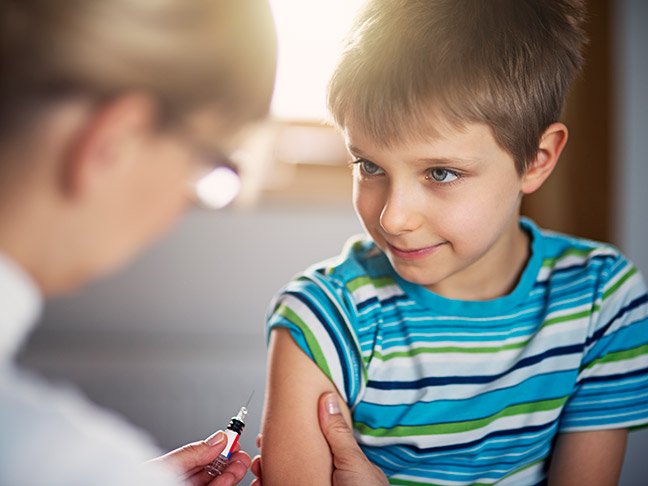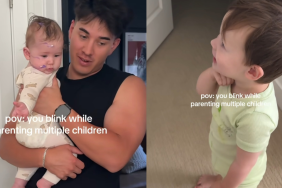My 8-year-old was furious at me the other day because I made him sit on the couch with ice packs on his knees for the third time that week. He wanted to practice ninja stunts in the backyard. He wanted to go to a birthday party at the trampoline park. Mostly, though, he wanted to throw the ice packs out the window.
I couldn’t blame him.
Hemophilia, for those who don’t know, is a bleeding disorder in which a person cannot properly form a blood clot. I like to tell people to imagine a row of dominoes. Your blood is a miraculous thing that is made up of 13 factors. If you get an injury that causes bleeding then that row of factors—or dominoes—begins to set off its chain reaction.
For my son, who has classic hemophilia, his dominoes 1 through 7 all fall down and do their jobs perfectly, but number 8 just can’t. It gets all jammed up because my son’s body can’t make enough of factor number 8 to do its job. So, we infuse him with a super-expensive medicine, a synthetic form of domino number 8, that is injected into a port implanted in his chest.
Having hemophilia means living a “normal” life is one punctuated by ice packs on joints, IV infusions, and constant monitoring. And while this genetic disorder won’t likely be what causes my son to die one day, it is most certainly the thing that will significantly affect every stage of his life.
Raising a child with hemophilia means being stressed out about the politics and expense of healthcare, worrying about being singled out by other kids, constantly asking and thinking about safety issues, and always having some kind of humorous sage advice at the ready for when my son is in tears because he is the only kid he knows with this unfair diagnosis.
For my other children, who do not have a bleeding disorder, hemophilia has become a badge of honor. My 4-year-old often asks when he can have his hemophilia or when he can go visit his older brother’s doctors. I think that says a lot about how people living with hemophilia are treated by the medical community now. If you know the story of Ryan White then you know that in decades past, the media stigmatized hemophilia.
When I look at my kids who don’t have hemophilia, I see limitless futures in which they can chase down their dreams with the privilege of good health. In my oldest child, I see a future of worrying about what jobs he can take based on whether or not they grant him healthcare that covers the one drug that means the difference between becoming crippled from destroyed joints and a life of relative normalcy.
I worry about my oldest son wanting to have children and the anguish he may feel when he wonders if he’ll pass on the defective gene to his own kids.
Let’s be honest, I’m a mother, so I can worry at an Olympic-level, but even I know that these fears are just that: fears. There is a world of breakthroughs happening with gene therapy, which means that a cure for my son will likely happen in his lifetime. Hemophilia, thank goodness, is one of the most heavily funded diseases in terms of research. Scientists truly want to figure out this blood puzzle.
When I ask my son what he wants to be when he grows up, his answer sways between ninja and scientist. He wants to rid the world of bad things. He wants a future with no pain and no more worry about missing out. I tell him that he can combine the two passions and become a samurai scientist who helps to find a cure for hemophilia. I think he’s headstrong and whip-smart enough to do just that.
Raising a child with hemophilia is a constant, up-close reminder of how the magic of love, the tenacity of empathy, and the weight of worry can shape a heart. While I am busy giving my son every opportunity to hone his resiliency and compassion, he is busy teaching me the awesome depth of love.
This year, on World Hemophilia Day, please take a few minutes to learn more about the history of hemophilia, the laws that safeguard our nation’s blood bank and how they affect you and your family, and consider volunteering or donating to a local hemophilia organization.
Photo: Getty








